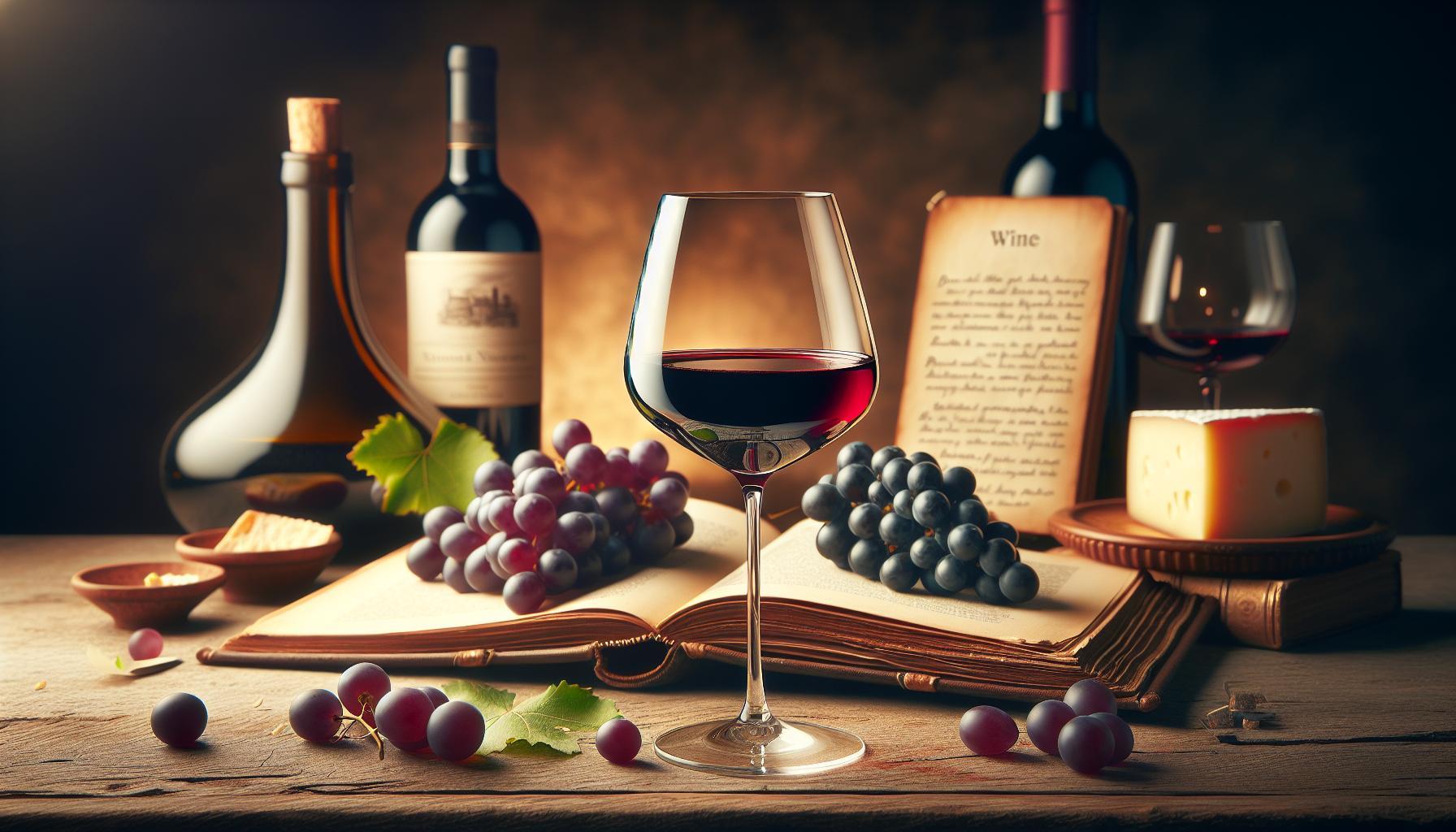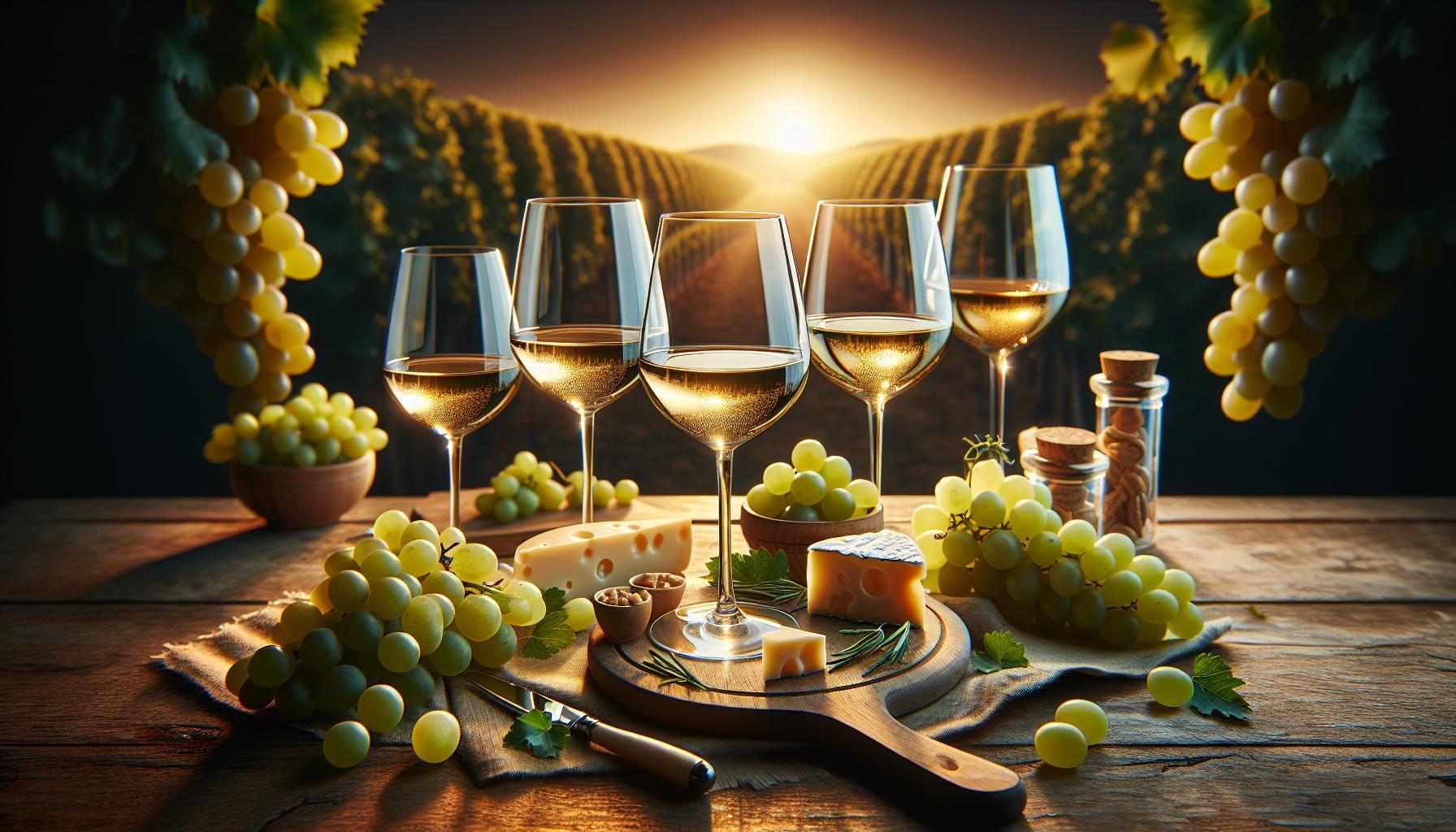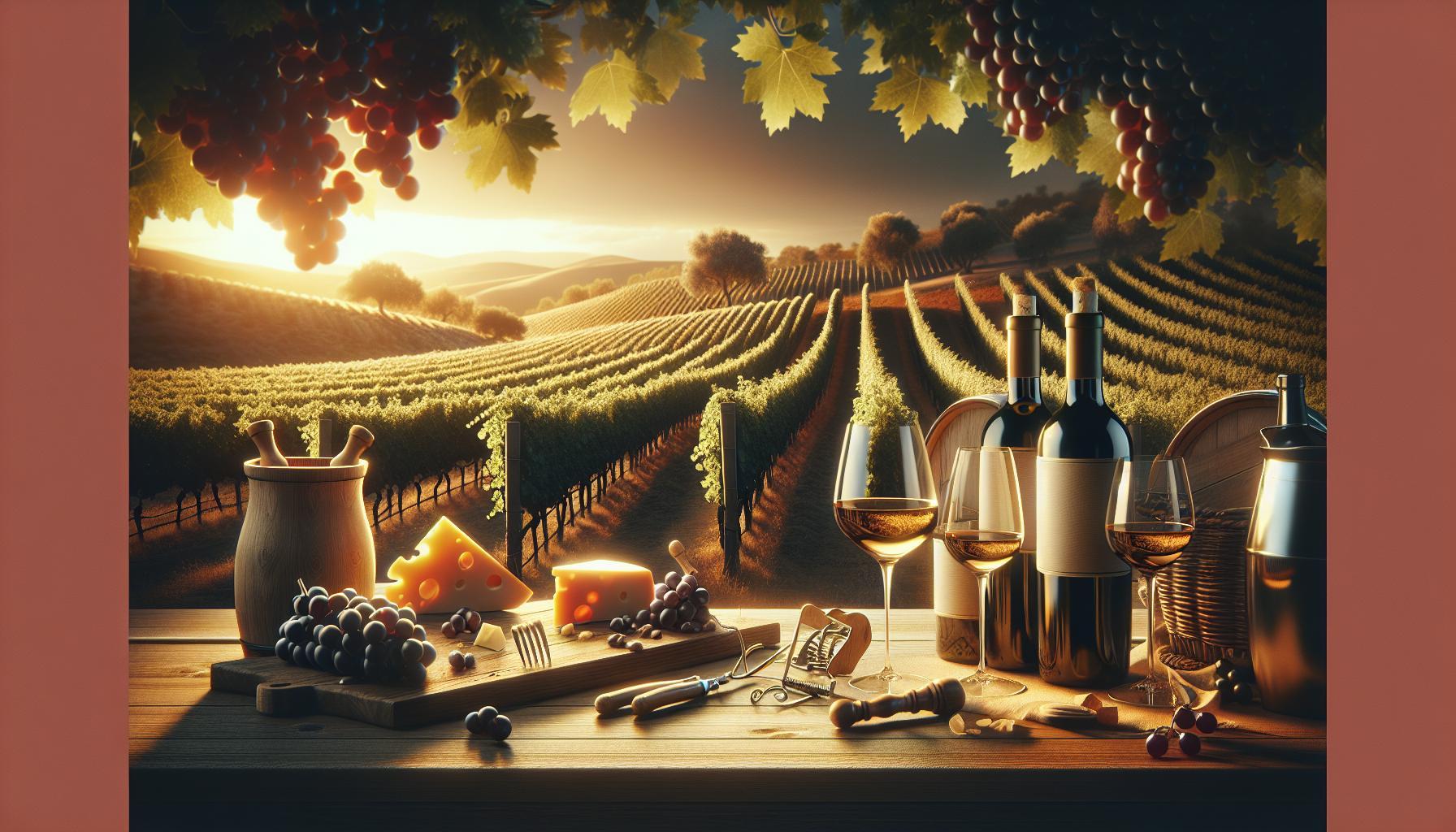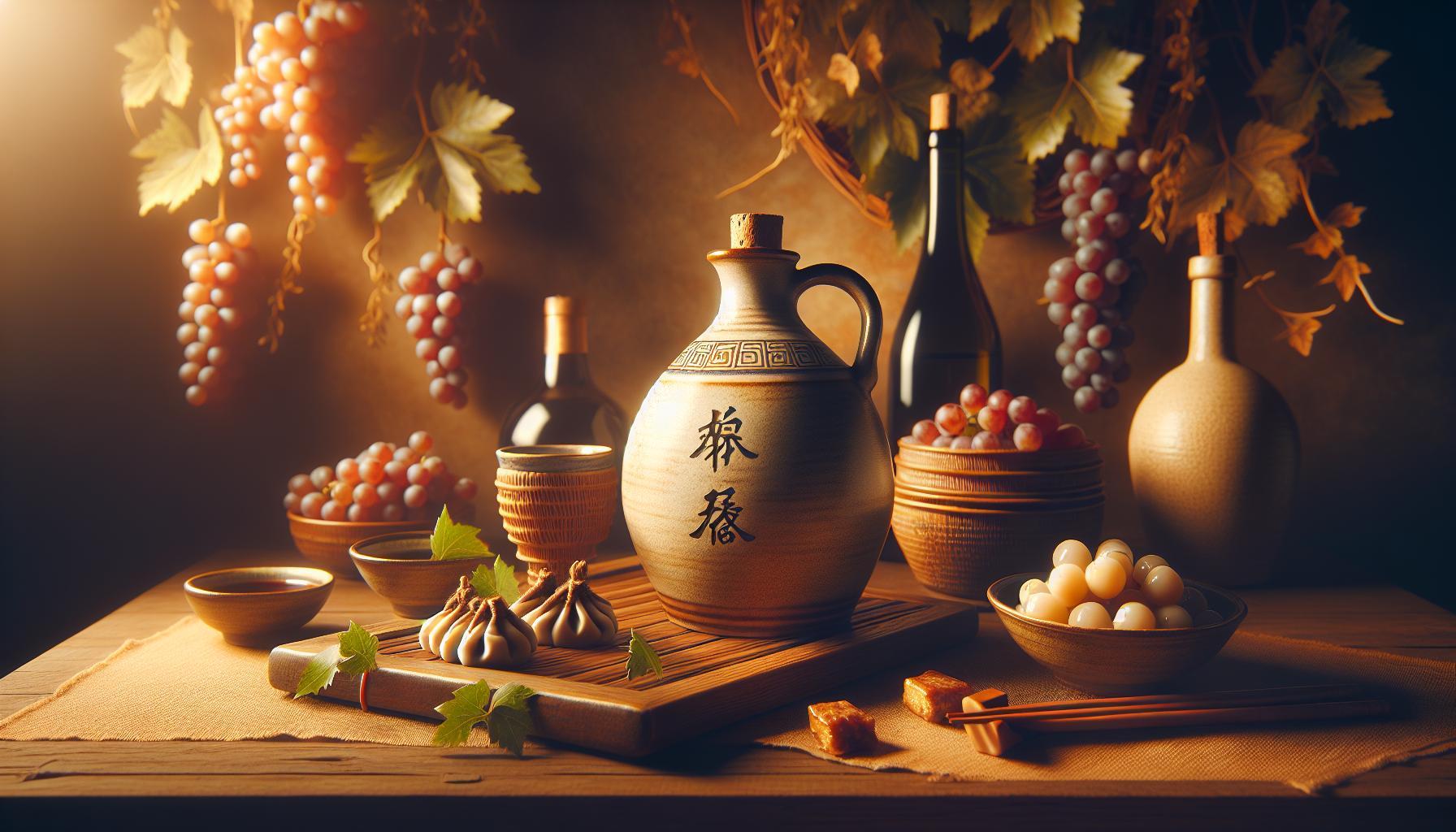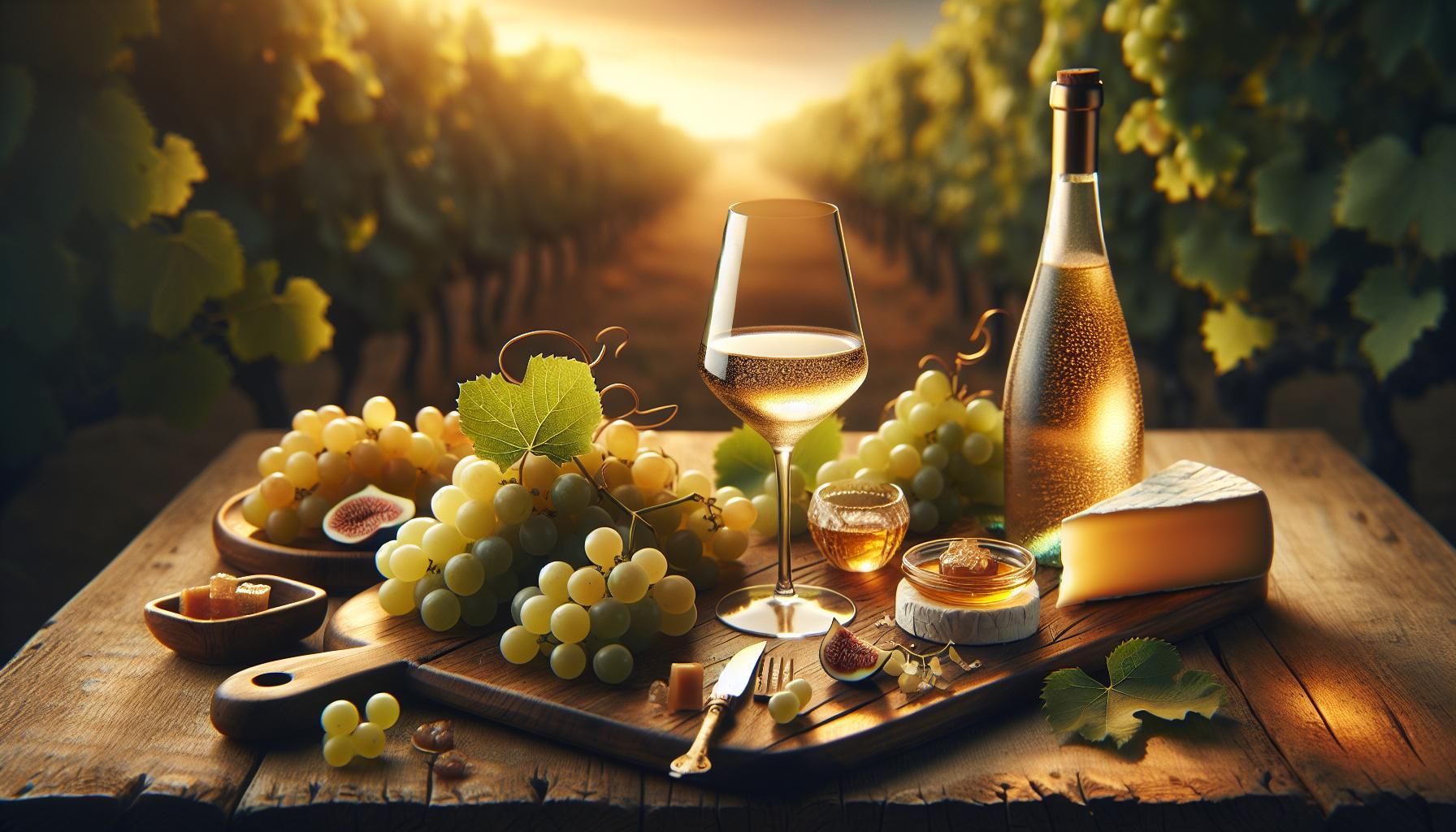Did you know that most of the world’s wines are actually dry? As you embark on your journey through the intriguing universe of wine, understanding dry wine is essential. These wines, characterized by their lack of residual sugar, reveal a tapestry of flavors and aromas that can elevate a meal, enhance a gathering, or simply be enjoyed on their own.
Each sip of dry wine has a story to tell-crafted by the unique terroirs, grape varieties, and winemaking techniques that shape their character. Whether you’re a novice seeking a delightful entry point into wine appreciation or a seasoned connoisseur wishing to deepen your palate, recognizing the distinctions and nuances within dry wines can transform your experience.
Join us as we explore the diverse styles, significant varieties, and the artistry behind dry wines. You’ll discover how these wines not only reflect the land they come from but also connect us to shared moments and memories, proving that every bottle indeed holds a piece of history and culture waiting to be savored.
What Is a Dry Wine? Exploring its Definition and Characteristics
The allure of dry wine lies in its remarkable ability to convey the essence of the grapes and the surrounding terroir without the distraction of sweetness. At its core, a dry wine is one that has little to no residual sugar, typically containing less than one gram of sugar per liter after fermentation. This absence of sweetness allows other flavor characteristics to shine through, offering a tapestry of sensory experiences ranging from earthy and herbaceous to fruity and floral. Dry wines often exhibit a crisp and refreshing quality, making them the perfect companion for food, enhancing both the dish and the wine in harmonious synergy.
When exploring the characteristics of dry wines, one can’t help but appreciate the complexity imparted by various factors. The choice of grape variety plays a pivotal role in flavor profile and mouthfeel. For example, Sauvignon Blanc is celebrated for its vibrant acidity and zesty citrus notes, while a dry Cabernet Sauvignon showcases bold tannins and deep berry flavors. Winemaking techniques, such as fermentation methods and aging processes, further influence these characteristics, allowing winemakers to manipulate the final product to achieve a desired style. Techniques like malolactic fermentation can soften acidity, while oak aging introduces layers of spice and vanilla that enhance the overall drinking experience.
In the world of dry wines, the charm lies in their versatility and food compatibility. From delicate seafood dishes to robust grilled meats, the right dry wine can elevate a meal, transforming a simple dinner into a culinary adventure. Moreover, understanding the various types of dry wines-from crisp whites and elegant rosés to full-bodied reds-not only expands the palate but also deepens one’s appreciation for the craft of winemaking. Each sip becomes an exploration of history, culture, and even geography, as the nuances of the region’s soil, climate, and local traditions unfold on the palate.
The Art of Winemaking: Crafting Dry Wines
Crafting dry wines is not merely a scientific endeavor; it is an art that marries tradition, terroir, and innovation. Each bottle encapsulates the story of its origin, influenced by the unique conditions under which the grapes were grown and harvested. From sandy soils of the Rhône Valley to the volcanic landscapes of Santorini, the terroir imparts distinctive characteristics to the grapes, shaping the final product. This deep connection between earth and wine is why many winemakers stress the importance of understanding the land-after all, it is where the journey begins.
As grapes undergo the fermentation process, winemakers are faced with critical decisions that affect sweetness levels. In crafting dry wines, the goal is often to limit residual sugar, pushing the balance toward an expression of acidity and complex flavors. For instance, during fermentation, the choice of yeast and its handling can significantly sway the outcome. Some yeast strains fully ferment sugars, yielding a more austere wine, while others leave traces of sweetness. Post-fermentation techniques play a pivotal role too; methods such as malolactic fermentation can soften the sharpness of acidity, enriching the mouthfeel and enhancing the wine’s profile without adding sweetness.
The art of aging also contributes to the character of dry wines. Barrel aging can infuse a wine with layers of complexity; a well-placed touch of oak brings forth nuances of vanilla, spice, or toast that harmonize beautifully with the core fruit flavors. This subtle interplay between fruit, acidity, and oak often creates a dance of tastes and aromas that invites seasoned connoisseurs and curious novices alike to savor each sip. Furthermore, aging can also add texture, moving from a fresh, crisp delivery to a more rounded, velvety profile over time.
Ultimately, the creation of dry wines is a delicate balance of artistry and science, grounded in a respect for the land and the craft of winemaking. It invites exploration and appreciation, encouraging drinkers not only to enjoy a glass but to engage with the intricate stories behind each vintage and varietal. As consumers become more discerning, the rich tapestry woven through the experience of dry wine becomes even more rewarding-one sip at a time.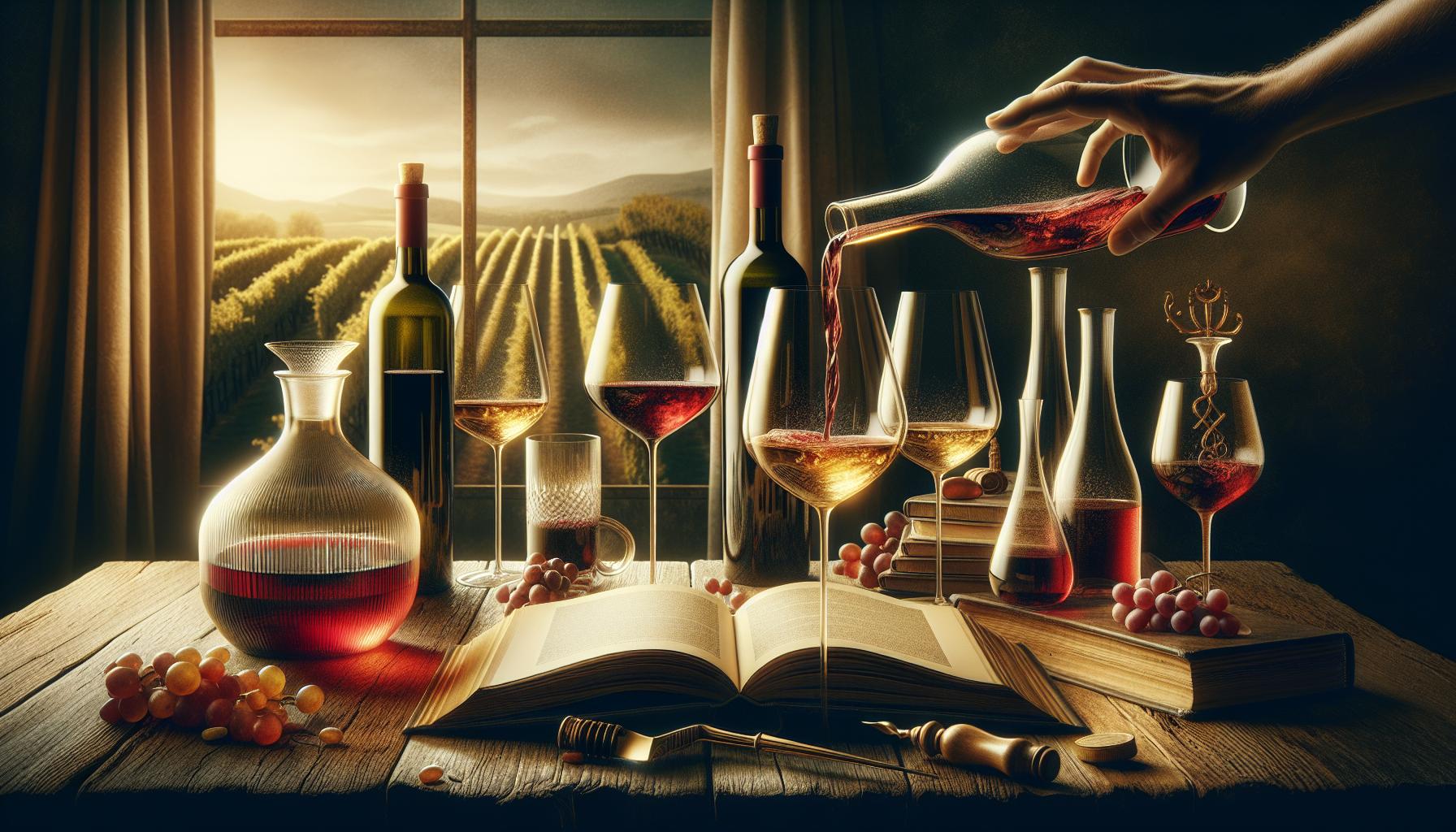
How Dry Wines Differ from Other Styles
Imagine savoring a glass of wine and feeling the vibrant acidity dance across your palate, supported by intricate layers of flavor that seem to unfold with each sip. This experience characterizes dry wines, which stand distinctively apart from their sweeter counterparts. At the core of this differentiation lies the fundamental aspect of residual sugar content, or the lack thereof. While sweet wines can have significant residual sugar, dry wines typically maintain less than 1% residual sugar, resulting in a clean, crisp taste that often highlights the winemaker’s intentions in expressing the grape’s natural characteristics.
To understand , one must consider the underlying processes of fermentation and aging, which sculpt the wine’s profile. For example, while sweeter wines like dessert wines undergo a range of modifications to preserve residual sugar, such as halting fermentation early or using late-harvested grapes, dry wines emphasize a complete fermentation wherein sugars are fully converted into alcohol. This difference in production not only affects sweetness levels but also influences mouthfeel and flavor dynamics. A well-crafted dry wine often showcases a remarkable balance of acidity, fruitiness, and even tannins, inviting the drinker to appreciate the complex interplay of flavors rather than succumbing to overt sweetness.
In contrast, consider off-dry wines-those which barely brush the line between sweet and dry, often marked by a subtle hint of sugar that can surprisingly enhance the perception of acidity and fruit. These wines may confuse the untrained palate; despite containing sugar, their acidity may create an impression of dryness. It’s a delicate dance, and understanding this spectrum of sweetness can deepen your appreciation of how target styles influence not only taste but also your overall dining experience.
Apart from the technicalities of sweetness, there are cultural and personal preferences that also shape our engagement with different wine styles. Some folks might relish the lusciousness of a late-harvest Riesling for dessert, while others may find joy in the refreshing zest of an Albariño paired with seafood. This tapestry of experiences invites wine enthusiasts to explore beyond the realm of dry wines-each sip, each style, tells a unique story. Ultimately, by understanding what sets dry wines apart, you can confidently navigate your choices, enhancing your palate and enriching your connection to the world of wine.
Decoding the Taste: What Makes a Wine Dry?
The allure of dry wine lies in its remarkable ability to showcase the intrinsic characteristics of the grapes from which it is crafted. At its essence, a dry wine emerges when fermentation is allowed to reach its natural conclusion, wherein the yeast consumes nearly all of the natural sugars present in the grape juice, converting them into alcohol. Typically, this results in a residual sugar content of less than 1%, affording dry wines their crisp and clean profiles. This process allows the flavors that are native to the grape variety and the terroir-geographical and environmental factors-to shine through, inviting exploration and discovery.
As you embark on your journey to decode the taste of dry wines, pay attention to the symphony of flavors and sensations that greet your palate. Each varietal sings its own unique melody: the zesty citrus notes of a Sauvignon Blanc might dance alongside the minerality of its vineyard, while a Cabernet Sauvignon might reveal deep layers of black fruit, supported by a backbone of firm tannins and vibrant acidity. This balance creates a refreshing and invigorating drinking experience, often urging you to take another sip, as the interplay between acidity and fruitiness challenges any preconceived notions of what wine should be.
To truly appreciate what makes a wine dry, it’s essential to view it through the lens of its interactions on the palate. The sensation of dryness can stem not only from low residual sugar but also from the wine’s acidity level, which can enhance the perception of crispness and brightness. A well-crafted dry wine embodies a harmony that elevates food pairing to an art form, where the acidity can compliment and enhance the flavors of various dishes, from a crispy shellfish to a hearty steak. The complexity found in these wines creates a depth that invites discussion, as each glass offers a new opportunity to appreciate subtle notes that may go unnoticed at first.
Thus, tasting dry wine is not merely an act of consumption but an exploration-an invitation to connect with the vine, the soil, and the artistry involved in its creation. As you indulge, consider the intricate relationship between the elements at play: sunlight, soil, and the skilled hands that guide each bottle from vineyard to table. In doing so, you’ll find that every sip of dry wine tells a story, unearthing layers of history, geography, and traditions that resonate with each individual’s palate.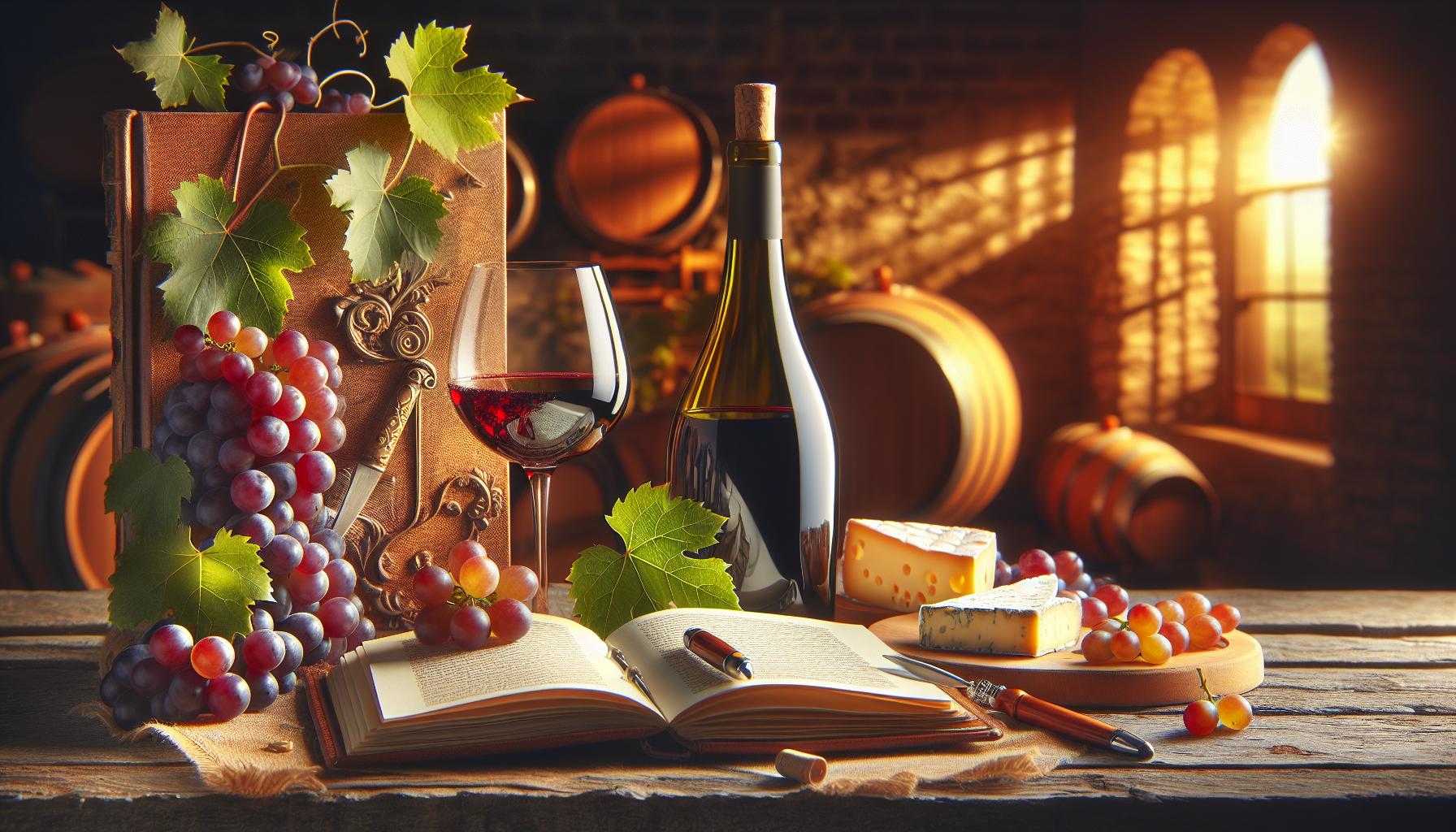
Exploring Major Dry Wine Varietals
When diving into the realm of dry wines, one quickly realizes that they’re not just beverages; they encapsulate a tapestry of flavors, histories, and cultures. Each varietal tells a unique story, influenced by the specific grapes, their growing conditions, and the winemaker’s craft. Here, we’ll explore some of the major dry wine varietals, each offering its own distinctive palette of taste sensations that can transport you to the vineyard from which it originated.
Sauvignon Blanc
A staple in the world of dry whites, Sauvignon Blanc is known for its vibrant acidity and zesty character. This wine often presents flavors ranging from citrus and green apple to herbaceous notes like green bell pepper or freshly cut grass. Regions such as Marlborough in New Zealand and the Loire Valley in France produce outstanding examples, each expressing its terroir through minerality and freshness. These wines are ideal for pairing with seafood, salads, or a refreshing goat cheese-enhancing the dining experience with their bright and crisp profile.
Chardonnay
Chardonnay stands as one of the most versatile varietals, capable of expressing a wide array of styles. Whether crafted in a lean and unoaked version that highlights green apple, lemon, and flinty notes, or in a buttery, oak-aged style featuring tropical fruits and vanilla, Chardonnay invites exploration. Notably, Chardonnays from regions like Burgundy distinguished by their minerality contrast beautifully with warmer climates like California that bring forth richer, rounder characteristics. Pair it with roasted chicken or creamy pasta dishes to enjoy its harmonious blend of acidity and richness.
Cabernet Sauvignon
On the red side, Cabernet Sauvignon reigns supreme, showcasing a robust body and intense flavors. Known for its dark fruit profiles-think blackcurrant and blackberry-alongside notes of tobacco, cedar, and spices, this varietal flourishes in regions like Napa Valley and Bordeaux. It’s often marked by its structured tannins, which only improve with age, making it a superb choice for hearty meats such as grilled lamb or steak. Each sip of Cabernet offers an experience of deep complexity, revealing layers of flavor that evoke the grandeur of vineyards.
Pinot Noir
Pinot Noir is a thrilling varietal that captivates with its elegance and depth. Characterized by its red berry flavors-strawberry, cherry-and earthy undertones like mushroom or truffle, Pinot Noir thrives in cooler climates such as Burgundy and Oregon’s Willamette Valley. The finesse and low tannin structure make it remarkably food-friendly, complementing everything from roasted duck to rich pasta dishes. Its complexities invite a longer engagement, encouraging sippers to unwind and savor the experience of each glass.
Tempranillo
Hailing from Spain, Tempranillo is cherished for its ability to express the terroir and personality of the region it’s grown in. Known for flavors reminiscent of cherry, leather, and vanilla**, this varietal often ages beautifully in oak, adding a layer of sophistication. Tempranillo is wonderfully paired with tapas, grilled meats, or Spanish stews, making it a true companion for convivial meals that resonate with warmth and heart.
Each varietal of dry wine not only provides taste sensations but also serves as a window into diverse wine cultures. Whether through a chat about the soil quality that affects Cabernet Sauvignon or the climate that best suits Chardonnay, every bottle is part of a larger narrative waiting to be uncovered. The key is to approach each varietal with curiosity and an open heart, ready to discover what each glass has to offer. Quite like life, the complexity of dry wines becomes apparent not at the first sip but through the exploration of its evolving flavors and the stories that unfold with each pour.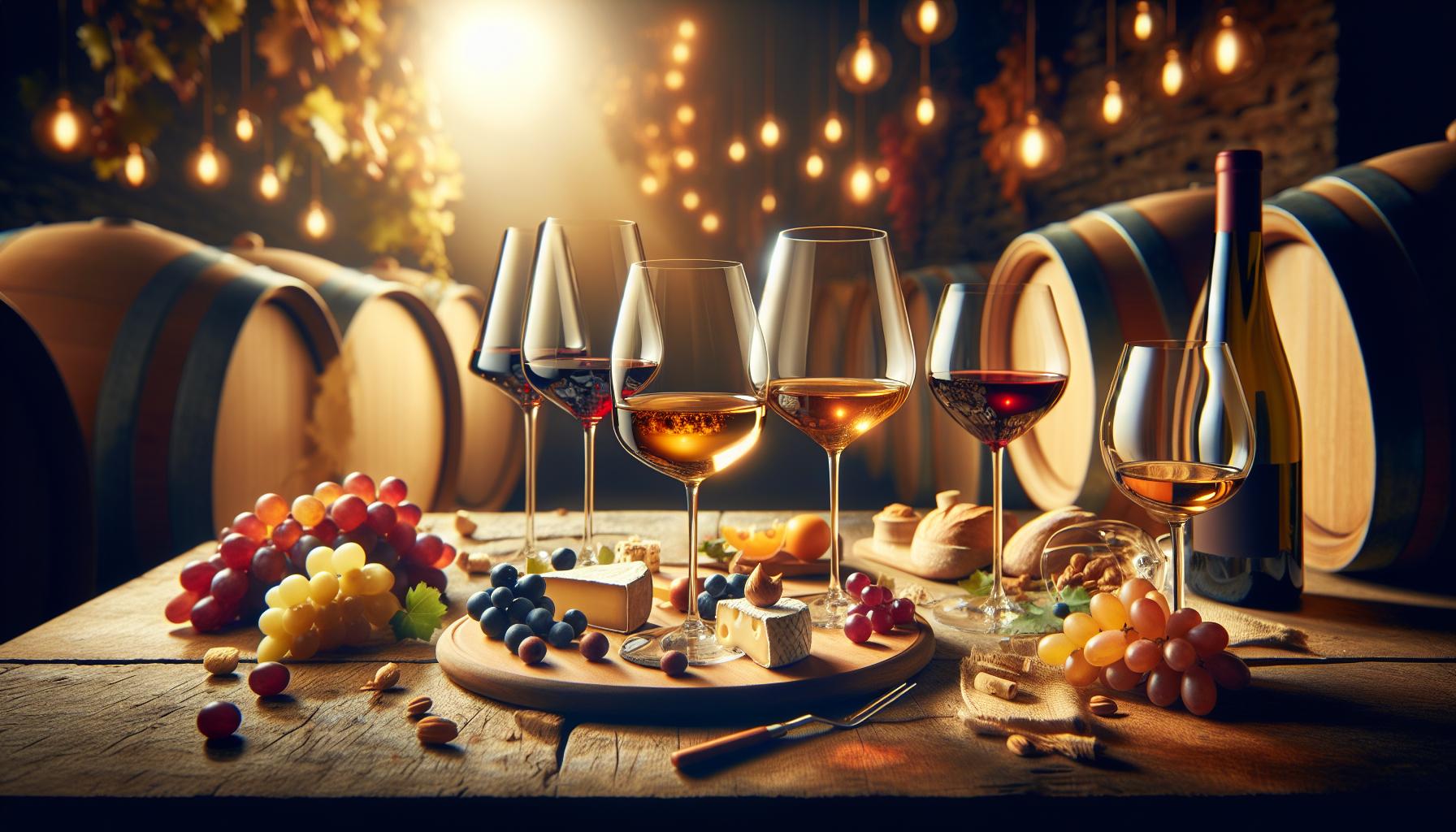
The Role of Terroir in Dry Wine Flavors
In the world of winemaking, terroir is much more than a buzzword-it’s the very essence that gives dry wines their character and personality. Terroir encompasses the unique combination of soil, climate, geography, and even traditional practices that shape the grapes and, ultimately, the wine itself. Each vineyard site tells a different story, revealing layers of flavor and complexity in every sip. The idea that the ground beneath us, the breezes that brush the vines, and the sunlight that warms the grapes can all influence flavor profiles is both intriguing and humbling.
The influence of terroir is particularly palpable in dry wines, where the absence of residual sugar allows the intrinsic qualities of the grapes and the environment to shine through. For instance, a Sauvignon Blanc from Marlborough, New Zealand, might burst with vibrant notes of citrus and passionfruit due to its unique soil compositions and sunny, cool climate, while a Loire Valley Sauvignon Blanc might present more minerality with herbal nuances, showcasing its colder and rainier terroir. This variation highlights how two wines made from the same grape cultivar can taste profoundly different, inviting drinkers to explore the geography of flavor.
Furthermore, the elevation of the vineyards plays a crucial role in defining a wine’s profile. Higher altitudes can lead to cooler temperatures, which preserve acidity and enhance freshness-elements that are highly prized in many dry wine styles. For example, high-altitude vineyards in regions like Argentina’s Mendoza produce Malbecs that boast intense fruit flavors coupled with a refreshing acidity, elucidating the stark contrast with their lower-altitude counterparts. Elements like diurnal temperature shifts-where days are warm but nights are cool-can also impart a balance of ripeness and crispness, showcasing the meticulous dance between heat and cold that enhances flavor development in the grapes.
As you embark on your journey of wine discovery, consider terroir as a narrative thread weaving through each bottle, connecting you not only to the land but also to the people who cultivate it. When tasting a dry wine, take a moment to ponder its origin. Imagine the sunlight, the rain that nourished the vines, and the hands that harvested the grapes. Such reflections transform a simple tasting into an enriching experience, allowing you to appreciate the sublime connection between nature and the artistry of winemaking. In this manner, you embrace not just the taste, but the very soul of the wine, enveloping your senses in its rich story.
Pairing Perfection: Food Matches for Dry Wines
When it comes to enjoying dry wines, the delicate balance of flavors invites a thoughtful approach to food pairing that elevates the dining experience. For those who appreciate the crisp and clean profiles of wines like Sauvignon Blanc or Pinot Grigio, the right food can unlock new dimensions of taste. These wines, often refreshing with vibrant acidity, shine alongside dishes that are equally bright and light. A classic pairing might include grilled fish, drizzled with lemon herb sauce, where the wine’s acidity mirrors the tangy zest of the dish. Consider also a goat cheese salad, where the creamy texture and grassy notes of the cheese enhance the wine’s refreshing characteristics.
Complementing Flavors and Textures
Not all pairings are about contrasts; sometimes, harmony reigns supreme. Dry rosés, with their lovely fruit-forward profiles, are versatile companions, harmonizing beautifully with Mediterranean fare. A charcuterie board adorned with cured meats, olives, and artisanal breads creates a delightful interplay of flavors, where the wine’s subtle fruit echoes the richness of the meats while refreshing the palate between bites. Similarly, a light pasta tossed in a fresh tomato basil sauce can elevate a dry white wine, allowing the wine’s fruitiness to complement the freshness of the dish.
Exploring Greater Depth with Reds
For those venturing into dry red wines, the world of pairing expands rapidly. A robust Cabernet Sauvignon, characterized by its full-bodied flavor and tannic structure, calls for hearty foods like grilled lamb or a rich mushroom risotto. Here, the richness of the wine supports the umami elements of the dish, creating a symphony of flavors that resonates beautifully. While sumptuous red meats are often touted as the go-to pairing, lighter options like duck breast or even savory dishes like ratatouille can also pair seamlessly with darker wines, showcasing the wine’s nuanced characteristics.
Experimenting and Personal Preferences
Ultimately, the adventure of pairing dry wines with food is a deeply personal journey. As you explore various combinations, pay attention to how the flavors interact. Utilize this exploration to discover your own preferred pairings-for example, if you enjoy the acidity of a Sauvignon Blanc but prefer richer foods, try it with a spicy Asian stir-fry. The mingling of spicy and bright can create an exhilarating balance that surprises the palate. Don’t hesitate to branch out and experiment; the joy of wine lies in its capacity to enhance every meal, turning mundane dining into something magical. Each sip tells a story, and when paired thoughtfully, that story becomes a shared celebration at the table.
Understanding Sweetness Levels in Wines
When delving into the world of wines, understanding sweetness levels is essential, particularly for those who seek the crisp, elegant experience of dry wines. Sweetness in wine is primarily derived from residual sugar-the leftover sugar from the fermentation process that transforms grape juice into wine. This subtle complexity often eludes many wine enthusiasts, leading to delightful revelations once unlocked. A wine categorized as “dry” typically contains less than 1% residual sugar, offering a taste that is more about acidity, tannins, and other flavor compounds than overt sweetness.
The perception of sweetness in wine, however, is influenced by several factors beyond just residual sugar levels. Acidity plays a pivotal role in shaping the taste experience. For instance, a wine with high acidity, such as Sauvignon Blanc, may seem less sweet than it is, despite having slight residual sugars. Similarly, the balance of tannins-especially in red wines-can accentuate a wine’s dryness, making a high-tannin wine taste less fruity and more structured. As you sip your glass, allowing these components to mingle can transform your understanding of both sweetness and dryness, revealing the multi-dimensional nature of wine.
The Spectrum of Sweetness
To navigate the sweet to dry continuum, a few understanding points can help elevate your wine-tasting journey:
- Dry Wines: Less than 1% residual sugar. Expect vibrant acidity and complex flavors without sweet notes.
- Semi-Dry Wines: Typically 1% to 3% residual sugar, these wines maintain a balance of sweetness and acidity, providing a gentle fruitiness.
- Semi-Sweet Wines: Ranging from 3% to 5% residual sugar, these wines increasingly showcase sweetness while keeping refreshing qualities.
- Sweet Wines: More than 5% residual sugar. These wines deliver a luscious sweetness, often accompanied by a low acidity and rich mouthfeel.
Embracing this spectrum allows one to appreciate the vast array of choices available while demystifying the stages of wine selection and tasting. Whether exploring a crisp Pinot Grigio with its delightful dry characteristics or indulging in a rich, sweet Sauternes, each sip invites a new level of exploration.
The next time you uncork a bottle, consider the sweetness level as you embark on your tasting journey. Notice how it pairs with food, the impression it leaves on your palate, and the story it shares through its unique blend of acidity, body, and residual sugars. Understanding these nuances transforms simply drinking wine into a deeply enriching experience, where every bottle tells a compelling story worth savoring.
The Influence of Aging on Dry Wine Profile
As wine matures in the bottle, it undergoes a remarkable transformation, one that intricately weaves its evolving profile with time, oak treatment, and even the conditions of its storage. In the realm of dry wines, aging can enhance complexity, soften harsh tannins, and harmonize acidity, ultimately crafting a nuanced drinking experience that celebrates the art of patience. The interplay of chemical reactions, such as the development of tertiary aromas and flavors, can infuse a dry wine with layers of character-think of the way a fine Chardonnay might evolve from vibrant apple notes to more profound whispers of toasted almond and butterscotch after several years in the bottle.
The aging potential of dry wines largely depends on several intrinsic factors, including grape variety, alcohol level, acidity, and tannin structure. For instance, a young Cabernet Sauvignon with its bold tannins may initially taste austere, but with time, those tannins soften, revealing a rich tapestry of dark fruit and earthy undertones, inviting a contemplative sip. In contrast, a higher-acid white wine like Riesling can surprise aficionados with its aging potential, evolving into a complex melody of citrus, honey, and floral notes.
Embracing the concept of aging also invites an exploration of how wine interacts with its environment-what the French term terroir. The climate where the grapes are grown, the soil composition, and even the winemaking practices contribute to how well a wine will age. For dry wines, the ideal conditions typically mimic a cool cellar environment, maintaining stable temperatures and humidity levels. Research suggests that conditions that fluctuate too much can negatively impact the wine, leading to subpar aging.
Ultimately, the journey of a dry wine from vineyard to glass is a testament to both nature and nurture. It’s an exciting process to witness how patience pays off as the wine opens up, revealing its true self while offering a sensory connection to the land it came from. Serving a well-aged dry wine, whether it’s a red brimming with character or a white radiating with finesse, not only delivers delight but also initiates a conversation about its history, making each bottle a cherished story worth sharing.
Navigating Wine Labels: Identifying Dry Wines
The world of wine can often feel like a labyrinth, filled with complex terms, and swirling aromas, which makes navigating a wine label both an exhilarating and daunting experience. At the heart of deciphering these labels lies an essential understanding of what constitutes a dry wine, which is typically defined as containing less than 0.5% residual sugar. Yet, the subtleties in labeling-often complex in itself-can lead to delightful discoveries or confounding missteps.
When scanning a wine label, look for specific terms or indicators that suggest a dry profile. Many producers will proudly display the word “dry” on their labels, particularly for whites like Sauvignon Blanc or reds like Cabernet Sauvignon. However, it’s essential to consider other clues as well. Terms such as “crisp” or “clean” often hint at lower sugar content, while phrases like “off-dry” can indicate a slight sweetness-a distinction that may not align with your preference.
Additionally, the grape variety itself can serve as a helpful guide. Certain varietals are recognized for their typical dryness. Names like Pinot Noir and Grenache generally suggest a firm structure with minimal residual sweetness. On the other hand, exploring European wines can be particularly intriguing; in regions like Bordeaux or Burgundy, it’s common for labels to reflect the terroir as much as the varietal, giving insight into the wine’s character beyond just its taste profile. For instance, knowing that many Bordeaux wines are crafted to be dry can lead to rewarding choices based on region alone.
Understanding the alcohol content on the label also aids in figuring out dryness; wines with higher alcohol levels (typically above 13.5%) often correlate with lower sweetness since more sugars have been fermented into alcohol. To further hone your search, consider factors like vintage and producer reputation, as seasoned winemakers are more likely to create a balanced dry wine.
In conclusion, while wine labels can feel like an intricate puzzle, arming yourself with knowledge about terminology, varietal characteristics, and alcohol percentages transforms the experience. With each bottle opened, there’s an opportunity to engage in a dialogue with the wine, allowing personal explorations of flavor and style that deepen your appreciation of dry wines and their nuanced world. Ultimately, the journey through wine labels becomes a personal narrative, inviting you to craft your own story with each sip.
Tips for Tasting and Appreciating Dry Wines
To truly appreciate the nuanced world of dry wines, it’s essential to engage not just your palate but your entire sensory experience. The first step is to create the right atmosphere; gather a few friends, fetch a lovely bottle, and find a space where you can savor wine together, allowing your conversations to flow as freely as the wine itself. Each sip tells a story, and part of that is influenced by the environment. Consider the scents in the air, the light illuminating the glass, and the textures of your surroundings. All these elements contribute to the wine experience, transforming each tasting into a memorable event.
Engaging Your Senses
Start by appreciating the visual aspect of the wine. Tilt the glass slightly and observe its color-whether it’s a robust ruby or a pale golden hue-each shade informs you about the varietal and aging process. Next, take a moment to swirl the wine gently in the glass. This action not only releases its aromas but also reveals the wine’s “legs,” the streaks that trickle down the interior of the glass. These legs can hint at the wine’s alcohol content and texture.
As you bring the glass to your nose, inhale deeply to identify the aromas. Often, dry wines will offer complex notes ranging from fruity to herbal, floral to earthy. Allow your mind to wander with these scents; if you detect hints of cherry or blackcurrant in a Cabernet Sauvignon, think back to delightful moments associated with those flavors. This is where wine appreciation can deepen into personal storytelling, linking flavors to specific memories or emotions.
Tasting Tips: The Flow of Flavor
When it comes time to taste, let the wine linger in your mouth for a few seconds. Savor the varied flavors unfolding on your palate; you might initially detect the fruitiness, followed by underlying tannins, and a finish that leaves a lasting impression. It’s a dynamic experience, similar to savoring a well-crafted piece of music. To enhance your tasting, consider the following tips:
- Palette Cleansing: Start with a light, neutral wine to prepare your palate. A crisp Sauvignon Blanc, for example, can act as a refreshing precursor to bolder reds.
- Food Pairing: The synergy between wine and food can elevate the tasting experience. Consider flavors that complement the dryness of the wine, such as charcuterie with aged cheeses or grilled vegetables.
- Diversity: Don’t hesitate to explore various regions and varietals. A dry Riesling from Germany may taste quite different from a dry Chenin Blanc from France-each brings its unique terroir into the glass.
Ultimately, appreciate that wine tasting is a personal journey. Engage with your feelings, explore the diverse tapestries of flavors, and share thoughts with your fellow tasters. Whether you enjoy that satisfying dryness of a well-crafted Pinot Noir or a complex Nebbiolo, let each bottle reflect a new chapter in your ongoing exploration of this timeless elixir.
Q&A
Q: What is dry wine?
A: Dry wine refers to wines with little to no residual sugar, typically containing less than 1% sugar. This lack of sweetness results in a crisp, clean taste that allows other flavors to shine, appealing to those who prefer a more intense wine experience.
Q: How is dry wine different from sweet wine?
A: The primary difference lies in residual sugar content. Dry wines have less than 1% residual sugar, while sweet wines retain higher levels, making them taste noticeably sweeter. This distinction plays a crucial role in taste preference and food pairing.
Q: What are the characteristics of dry wine?
A: Dry wines typically feature high acidity, complex flavors, and a clean finish. They often showcase fruit, floral, and earthy notes, allowing for a broader range of sensations on the palate. Enjoying these wines can enhance culinary experiences, as they pair well with various foods.
Q: Can dry wines be red or white?
A: Yes, dry wines encompass both red and white varieties. Common red dry wines include Cabernet Sauvignon and Pinot Noir, while white options often feature Chardonnay and Sauvignon Blanc. Understanding these styles helps in choosing the right wine for any occasion.
Q: Why does dry wine sometimes taste sweet?
A: Some dry wines may have a perceived sweetness due to factors like high acidity, fruit intensity, or oak aging. These elements can give a rounded mouthfeel that confuses the palate, making the wine seem sweeter than it is, despite its low sugar content.
Q: How can I tell if a wine is dry?
A: You can usually determine if a wine is dry by checking the label for descriptions such as “dry” or “bone dry.” Additionally, tasting it can reveal its character; if it lacks sweetness and has a crisp finish, it is likely a dry wine.
Q: What is the best food pairing for dry wine?
A: Dry wines pair wonderfully with a variety of foods, including grilled meats, seafood, and salads. The wine’s acidity helps to cut through richness in dishes, enhancing overall flavor. Experimenting with pairings can reveal captivating combinations.
Q: Are all wines labeled as ‘dry’ truly dry?
A: Not necessarily. Labels can sometimes be misleading. It’s essential to review reviews or tasting notes; taste tests from knowledgeable sources can help identify whether the wine meets your expectations of dryness. Consider exploring different varieties to find your preferred level of sweetness.
Final Thoughts
As we uncork the insights about dry wine, it’s essential to savor the nuances that shape its character and our palates. Understanding the balance of acidity, fruitiness, and tannins not only enhances your tasting experience but deepens your connection to the stories behind each bottle. Whether you’re a seasoned connoisseur or a curious newcomer, this knowledge empowers you to navigate the diverse world of wine with confidence.
If you want to explore further, check out our articles on “Tasting Notes for Different Wine Varietals” and “The Impact of Terroir on Wine.” Each offers valuable insights to enrich your wine journey. Don’t miss out on our exclusive newsletter, packed with tips and trends from the world of wine. Engage with us-share your thoughts and experiences in the comments below, and become part of our growing community of wine enthusiasts. Your next favorite bottle awaits!

